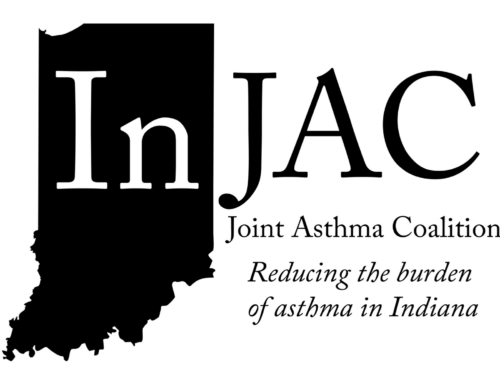Reducing Asthma Triggers in Your Home
Photo by Alexander Dummer on Unsplash
Dust Mites

Dust mites are tiny bugs that are too small to see. Every home has dust mites. They are found in mattresses, pillows, carpets, upholstered furniture, bedcovers, clothes, stuffed toys, and fabric and fabric-covered items. Dust mites can trigger asthma in individuals with allergies to dust mites. Exposure to dust mites can cause asthma in children who have not previously exhibited asthma symptoms.
Tips for controlling dust mites in the home:
-
-
- Use allergen-proof bed covers
- wash bedding weekly in hot water
- keep humidity low—use an air conditioner or a dehumidifier
- wash stuffed toys in hot water
- remove dust
- vacuum regularly
-
Mold
 Mold spores are naturally present in indoor air, and when they land on damp places indoors, they may begin growing. Molds can be found almost anywhere when moisture is present. For people sensitive to molds, inhaling mold spores can trigger an asthma attack.
Mold spores are naturally present in indoor air, and when they land on damp places indoors, they may begin growing. Molds can be found almost anywhere when moisture is present. For people sensitive to molds, inhaling mold spores can trigger an asthma attack.
Tips for controlling mold in the home:
-
-
- Control moisture by using air conditioning and dehumidifiers
- clean up wet materials quickly,
- clean, disinfect and dry surfaces that are prone to mold growth
- repair leaks
- dry items prior to storage
- improve airflow in your home by opening windows
- move furniture away from walls
- open closet doors
-
Pests
 Droppings or body parts of cockroaches and other pests can trigger asthma. Certain proteins are found in cockroach feces and saliva and can cause allergic reactions or trigger asthma symptoms in some individuals.
Droppings or body parts of cockroaches and other pests can trigger asthma. Certain proteins are found in cockroach feces and saliva and can cause allergic reactions or trigger asthma symptoms in some individuals.
Tips for pest control in the home:
-
-
- Using traps, bait or boric acid eliminates the use of chemicals in controlling pests
- If possible calling a professional exterminator is a good option
- Storing food in tightly sealed containers and disposing of all food garbage promptly in addition to regularly cleaning your home will help in eliminating household pests that can trigger asthma and allergy symptoms
-
Nitrogen Dioxide
 Nitrogen dioxide (NO2) is an odorless gas that can irritate your eyes, nose and throat and cause shortness of breath. NO2 can come from appliances inside your home that burn fuels such as gas, kerosene and wood. Smoke from your stove or fireplace can trigger asthma.
Nitrogen dioxide (NO2) is an odorless gas that can irritate your eyes, nose and throat and cause shortness of breath. NO2 can come from appliances inside your home that burn fuels such as gas, kerosene and wood. Smoke from your stove or fireplace can trigger asthma.
Tips for reducing nitrogen dioxide in the home:
-
-
- Keep gas appliances properly adjusted
- Use vented vs. unvented space heaters
- Use the right fuel in kerosene-powered space heaters
- Make sure that gas stoves have an exhaust fan vented to the outdoors
- keep flues open while using fireplaces
-
Chemical Irritants
 Chemical irritants are found in some products in your house and may trigger asthma. Many building materials release chemicals (often called volatile organic compounds, or VOCs) into the indoor air, sometimes long after the home is constructed. Chemical irritants may exacerbate asthma. At sufficient concentrations in the air, many products can trigger an asthmatic reaction.
Chemical irritants are found in some products in your house and may trigger asthma. Many building materials release chemicals (often called volatile organic compounds, or VOCs) into the indoor air, sometimes long after the home is constructed. Chemical irritants may exacerbate asthma. At sufficient concentrations in the air, many products can trigger an asthmatic reaction.
Tips for reducing chemical irritants in the home:
-
-
- When buying household products, be sure to read the labels carefully so that you know what you are getting.
- When using these products, closely follow the instructions, and when storing products, follow the label directions.
- Using multipurpose cleaners cuts down on the number of products you have stored in your home.
- Buy the least harmful product and avoid products labeled “Danger/Poison”, “Warning” and “Caution”.
- Use preventative measures by cleaning your household appliances immediately after each use. This lessens the need to use harsh chemicals on built up stains and spills.
-
Wood Smoke
 Smoke from wood-burning stoves and fireplaces contain a mixture of harmful gases and small particles. Breathing these small particles can cause asthma attacks and severe bronchitis, aggravate heart and lung disease and may increase the likelihood of respiratory illnesses.
Smoke from wood-burning stoves and fireplaces contain a mixture of harmful gases and small particles. Breathing these small particles can cause asthma attacks and severe bronchitis, aggravate heart and lung disease and may increase the likelihood of respiratory illnesses.
Tips for wood smoke safety in the home:
-
-
- Make sure you have a CO (carbon monoxide) detector in your home
- have it located close to where you can hear it should it go off and make sure it meets safety standards.
- Have a professional chimney sweep do an annual inspection and cleaning of your chimney to ensure there are no blockages or clogging.
- Replace older wood heaters or fireplaces with models made after 1990 for fuel efficient and healthier wood burning.
- Make sure you have a CO (carbon monoxide) detector in your home
-
To find out more about improving indoor air quality with new construction please visit Indoor airPLUS, a voluntary partnership and labeling program that helps new home builders improve the quality of indoor air by requiring construction practices and product specifications that minimize exposure to airborne pollutants including environmental asthma triggers.
Use the partner locator to find an Indoor airPLUS builder in your state @ Partner Locator
Visit the EPA’s website for information on indoor air quality and asthma.
Information in this article is from the Environmental Protection Agency and Indoor airPLUS.




